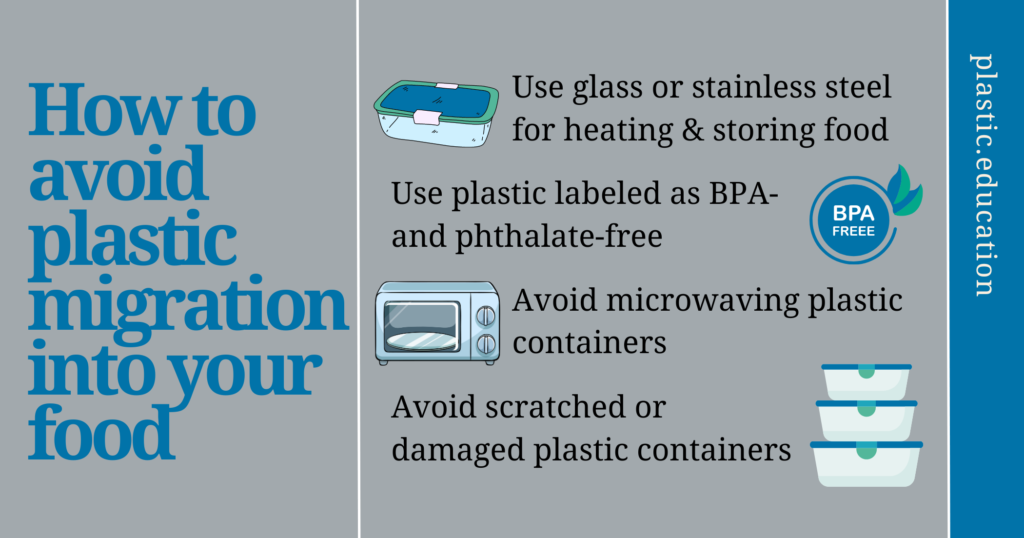The process of chemicals from plastics moving into our food is known as “migration.” Migration occurs when substances in a plastic material transfer from the plastic into the food or beverage that comes into contact with it.
This transfer of chemicals doesn’t happen in all plastics or under all conditions. It is more likely to happen under certain conditions such as heat, time, and contact surface area. And, the migration of chemicals from plastic into food will vary based on the type of plastic, the temperature, the duration of contact, and the specific chemicals involved.
Here are some key factors that contribute to the migration of chemicals from plastics into food:
- Temperature: Higher temperatures can accelerate the migration of chemicals from plastic into food. When plastics are heated, their structure can change, making them more prone to release chemicals. This is why microwaving or reheating food in plastic containers is often discouraged.
- Contact Time: The longer the food is in contact with the plastic, the more time there is for chemicals to migrate. Prolonged storage or exposure can increase the potential for migration.
- Type of Plastic: Different types of plastics have varying degrees of migration potential. Plastics that are more flexible or have higher levels of additives (such as plasticizers or colorants) are generally more likely to release chemicals into food.
- Additives: Many plastics contain additives to enhance their properties, such as plasticizers, stabilizers, colorants, and antioxidants. These additives can potentially migrate into food.
- Food Composition: The type of food and its composition can influence the migration of chemicals. Foods with higher fat content, for example, can attract more migration because certain plastic chemicals are more soluble in fats.
- Mechanical Stress: Mechanical stress, such as squeezing or pressing on plastic packaging, can also promote the release of chemicals.
Common plastic-related chemicals that may migrate into food include phthalates, bisphenol compounds (such as BPA), and other plastic additives. Regulatory agencies often set limits on the allowable migration levels for these chemicals to ensure that consumer exposure remains within safe levels.
To reduce the potential for chemical migration from plastics into food:
- Use glass, stainless steel, or other food-safe materials for heating and storing food.
- Choose plastics that are labeled as BPA-free or phthalate-free for food storage.
- Avoid microwaving plastic containers, especially those not labeled as microwave-safe.
- Do not use scratched or damaged plastic containers, as they may be more prone to migration.

